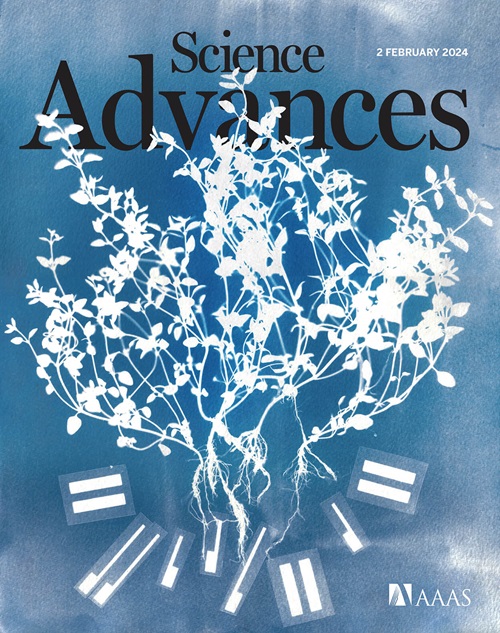An in vivo screen identifies NAT10 as a master regulator of brain metastasis
IF 11.7
1区 综合性期刊
Q1 MULTIDISCIPLINARY SCIENCES
引用次数: 0
Abstract
Emerging evidence has shown that epigenetic regulation plays a fundamental role in cancer metastasis, the major cause of cancer-related deaths. Here, we conducted an in vivo screen for vulnerabilities of brain metastasis and identified N-acetyltransferase 10 (NAT10) as a driver of brain metastasis. Knockdown of NAT10 restrains cancer cell proliferation and migration in vitro and tumor growth and brain metastasis in vivo. The poorly characterized RNA helicase domain of NAT10 is critical for cell growth in vitro, while both RNA helicase and NAT domains are essential for primary tumor growth and brain metastasis in vivo. Mechanically, NAT10 promotes the expression of 3-phosphoglycerate dehydrogenase (PHGDH) and phosphoserine aminotransferase 1 (PSAT1), two enzymes for serine biosynthesis implicated in brain metastasis. Silencing PHGDH or PSAT1 in metastatic breast cancer cells inhibits their growth in the serine/glycine-limited condition, phenocopying the effects of NAT10 depletion. These findings establish NAT10 as a key regulator of brain metastasis and nominate NAT10 as a target for treating metastasis.

求助全文
约1分钟内获得全文
求助全文
来源期刊

Science Advances
综合性期刊-综合性期刊
CiteScore
21.40
自引率
1.50%
发文量
1937
审稿时长
29 weeks
期刊介绍:
Science Advances, an open-access journal by AAAS, publishes impactful research in diverse scientific areas. It aims for fair, fast, and expert peer review, providing freely accessible research to readers. Led by distinguished scientists, the journal supports AAAS's mission by extending Science magazine's capacity to identify and promote significant advances. Evolving digital publishing technologies play a crucial role in advancing AAAS's global mission for science communication and benefitting humankind.
 求助内容:
求助内容: 应助结果提醒方式:
应助结果提醒方式:


